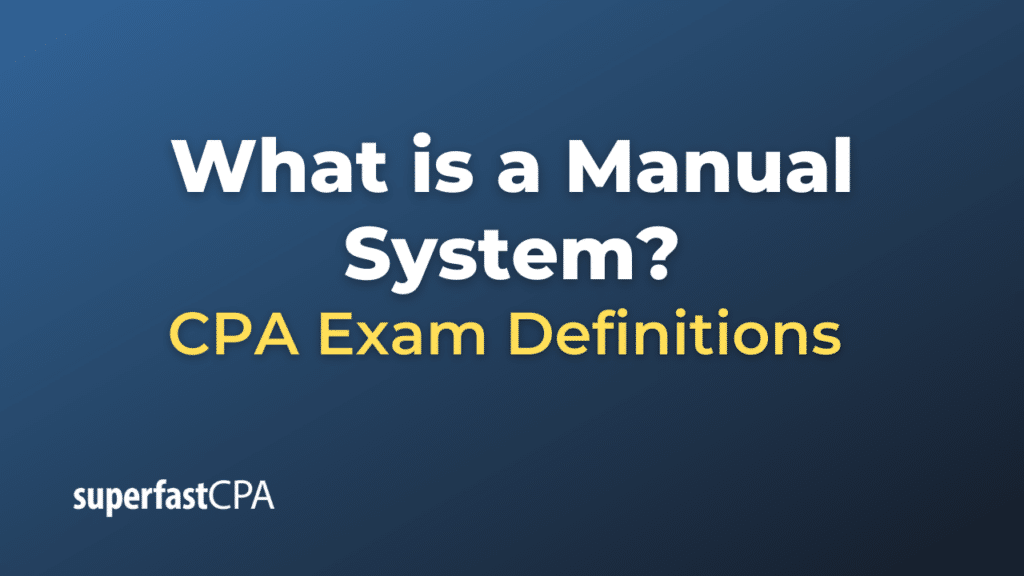Manual System
A manual system, in the context of business operations or information processing, refers to a system where data is processed and tasks are completed without the use of automated tools or software. Instead, they are completed by individuals through manual labor. These systems are typically characterized by paper-based methods and physical labor.
For instance, in the case of a manual accounting system, transactions are recorded by hand in a ledger, rather than being entered into an accounting software program. Similarly, a manual inventory system might involve physically counting items in a warehouse or storeroom, instead of using barcodes or RFID technology to automatically track inventory levels.
While manual systems can sometimes be simpler and more straightforward to implement than automated systems, they can also be more time-consuming, error-prone, and less efficient, particularly for larger organizations or for tasks that involve large amounts of data. Manual systems also lack the scalability of digital systems and can require more physical space for storing documentation.
Example of a Manual System
Let’s consider an example of a small retail shop to understand a manual system.
In this shop, when a customer makes a purchase, an employee would manually calculate the total cost of items, including any taxes or discounts, using a calculator or cash register. The employee would then collect payment from the customer, manually open the cash drawer to make change, if necessary, and then provide the customer with a handwritten receipt documenting the transaction.
Inventory in this retail shop would also be tracked manually. At the end of each day, week, or month, employees would physically count each item in the store to determine what is left in stock. If the count is less than what is expected based on sales, this might indicate theft or loss.
The shop’s accounting would also be performed manually. The shop owner would keep a ledger to record all transactions, including sales, expenses like rent or salaries, and any other cash inflows or outflows. The owner would use these records to create financial statements, calculate profitability, and prepare tax returns.
While this manual system might be feasible for a very small business, it would become increasingly difficult to manage as the business grows. Manual systems can be prone to human error and can require significant time and effort. An automated system, in contrast, could handle many of these tasks more efficiently and accurately.













